I am visiting the Grand Canyon for the third time. This is totally amazing for me, because when I was here for the first time I thought it was such a huge feat for me that another chance would not happen again. However it repeated twice, and I am unable to grasp this view every time, and enjoy my eyes with this encompassing space. For the past three years I have had a chance to return to these emotions and view every year. And the view is breathtaking and makes everyone feel so tiny against Mother Nature.This is a great place to feel respect for nature. To understand what is the most important and who produces the air that we breath every day.
*
Do Wielkiego Kanionu Kolorado docieram już po raz trzeci. Jest to dla mnie totalnie niesamowite, bo już za pierwszym razem sądziłam, że jest to tak ogromny wyczyn dla mnie, że taka szansa się już nie powtórzy. Powtórzyła się jeszcze dwukrotnie, a ja za każdym razem nie jestem w stanie ogarnąć tego widoku i nacieszyć oczu tą wszechogarniającą przestrzenią. Przez ostatnie trzy lata udaje mi się raz do roku powrócić do tych emocji i tego widoku. A widok zapiera dech w piersiach i sprawia, że każdy z nas względem cudownej Matki Natury staje się taki malutki. Jest to doskonałe miejsce, aby poczuć respekt przed naturą. By zrozumieć co jest najważniejsze i dzięki komu codziennie nabieramy powietrza w płuca.
My first visit in Grand Canyon - July 26, 2015
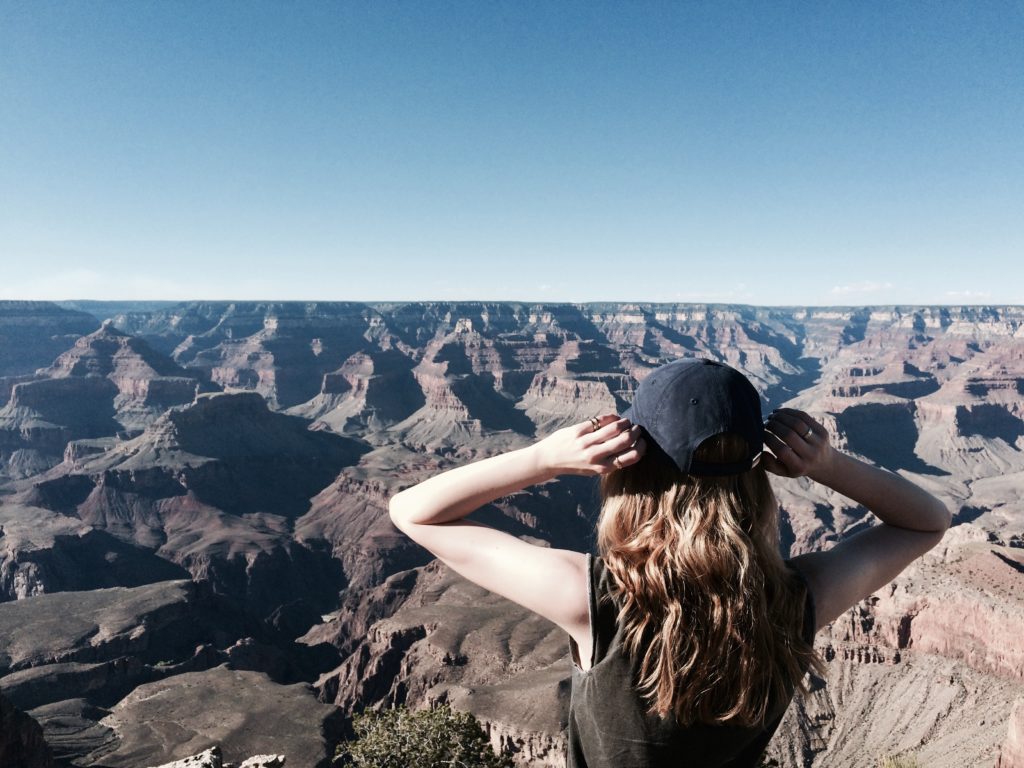
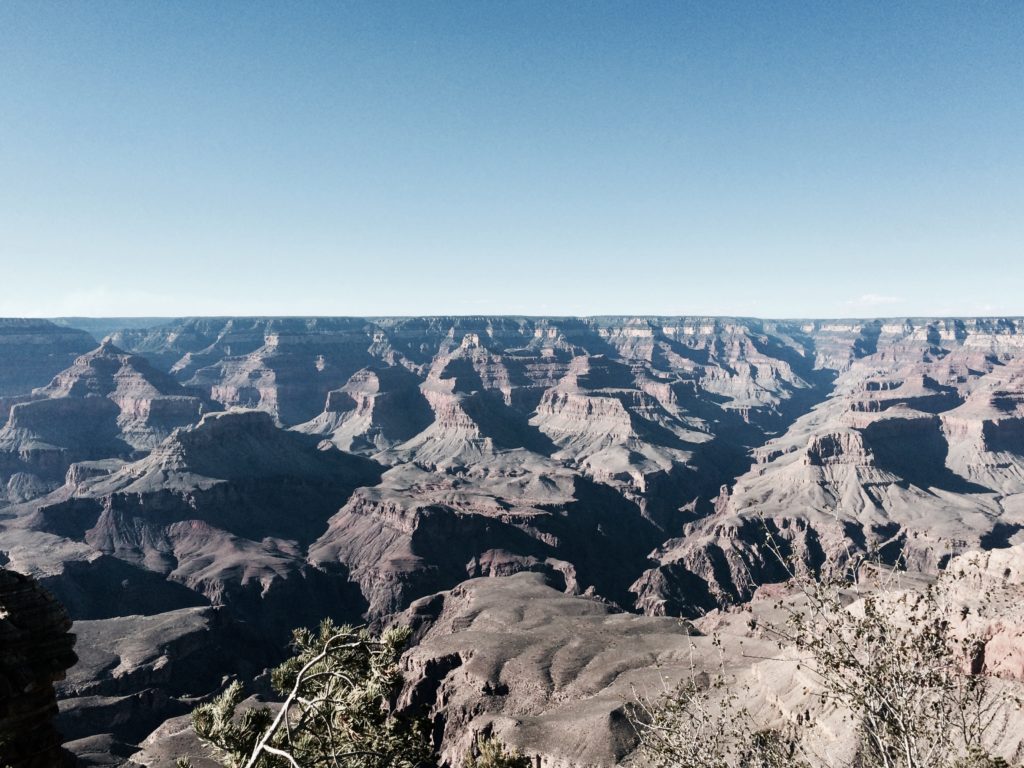
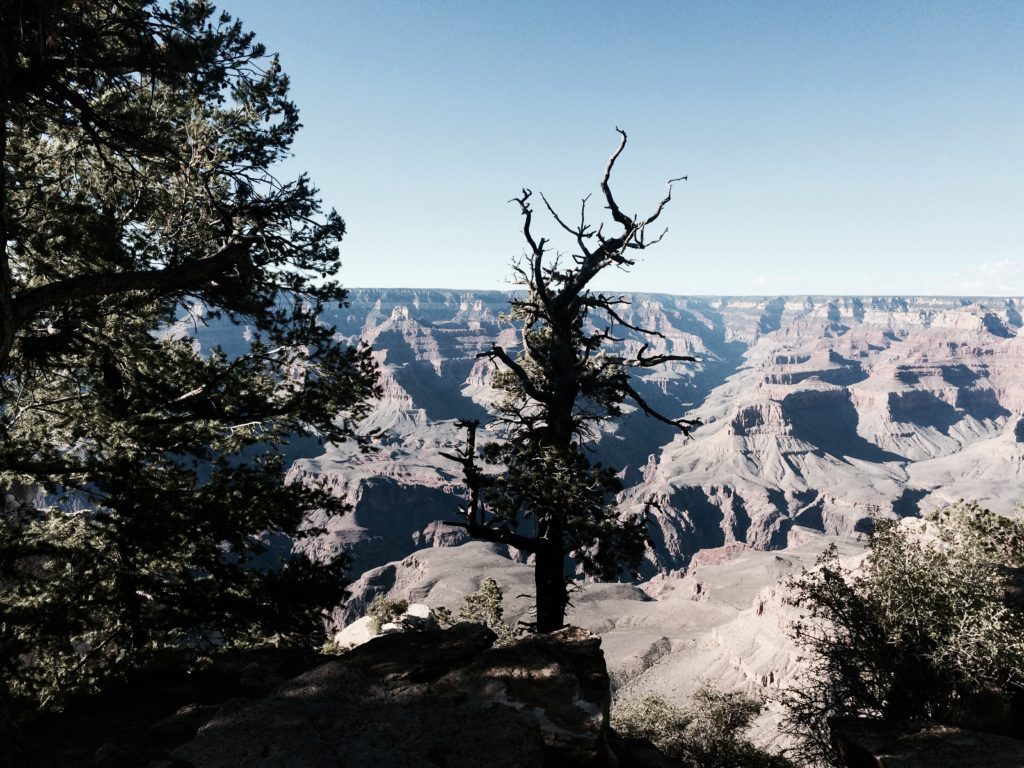
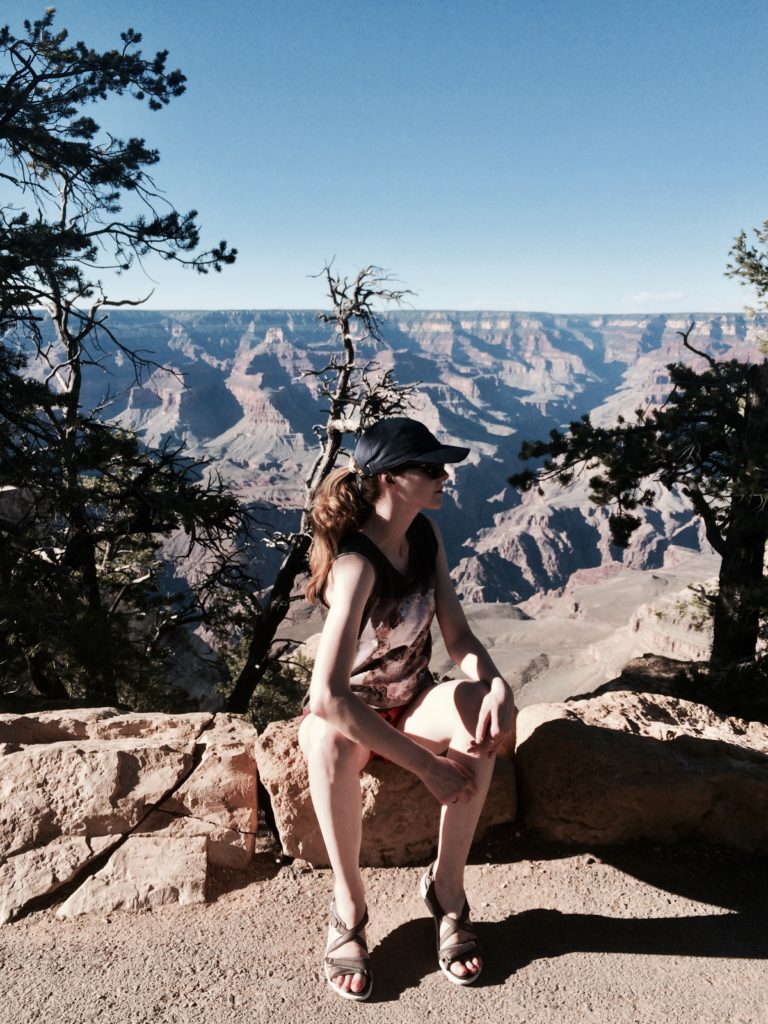
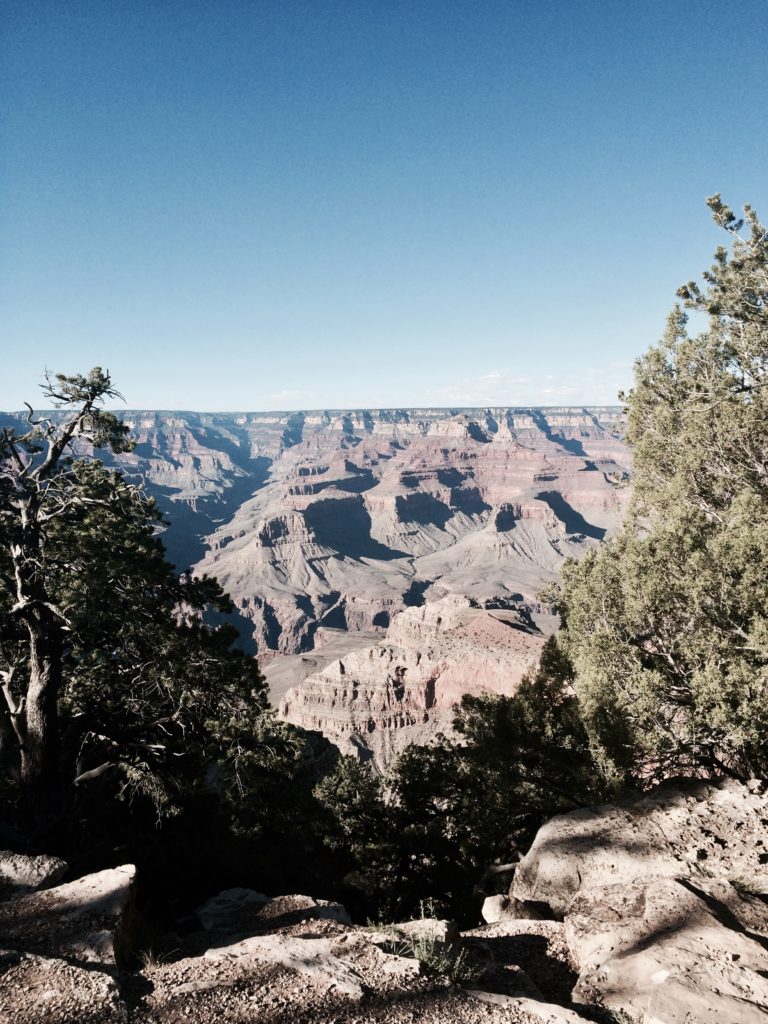
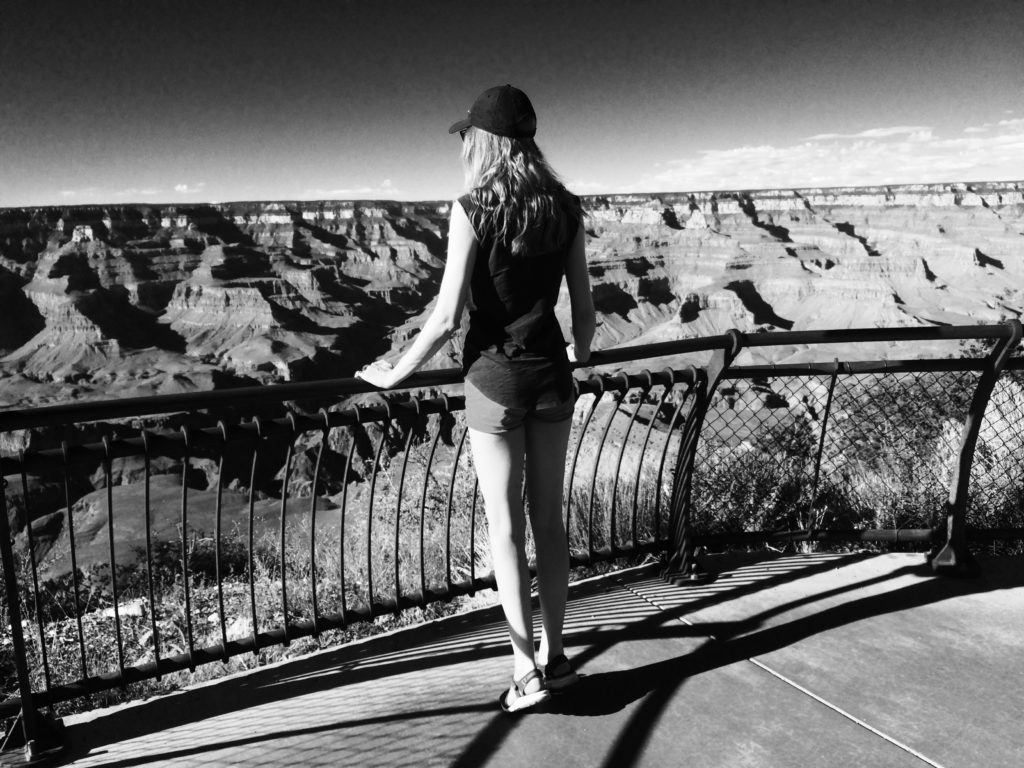
I am standing again over the Grand Canyon and can not believe that I am watching millions of years of history displayed by nature. And what exactly I can see?
Layers of rocks of the Grand Canyon discover various geological eras. At the bottom we find a 1.8 billion years old – Vishnu Basement Rocks. It is estimated that formation of the Grand Canyon was started 17 million years ago and perhaps it is most fascinating about this work of nature. You are standing over the edge and you see the story alive. You can see rocks that were formed almost 2 billion years ago. Impressive, right?
*
Stoję po raz kolejny nad Wielkim Kanionem i nie mogę uwierzyć, że obserwuję zapis milionów lat w czasie których natura zostawiła nam wiadomość. A co dokładnie widzę?
Skały Wielkiego Kanionu Kolorado odkrywają przed nami cały przekrój geologiczny. Na samym dole znajdziemy przekrój sprzed 1,8 mld lat – Vishnu Basement Rocks. Początki powstania Grand Canyon szacuje się, iż sięgają 17 mln lat wstecz i chyba to jest najbardziej fascynujące w podziwianiu tego dzieła natury. Stoisz nad krawędzią i widzisz żywą wciąż historię. Widzisz skały, które powstawały prawie 2 miliardy lat temu. Robi wrażenie prawda?
My second visit in Grand Canyon - June 30, 2016
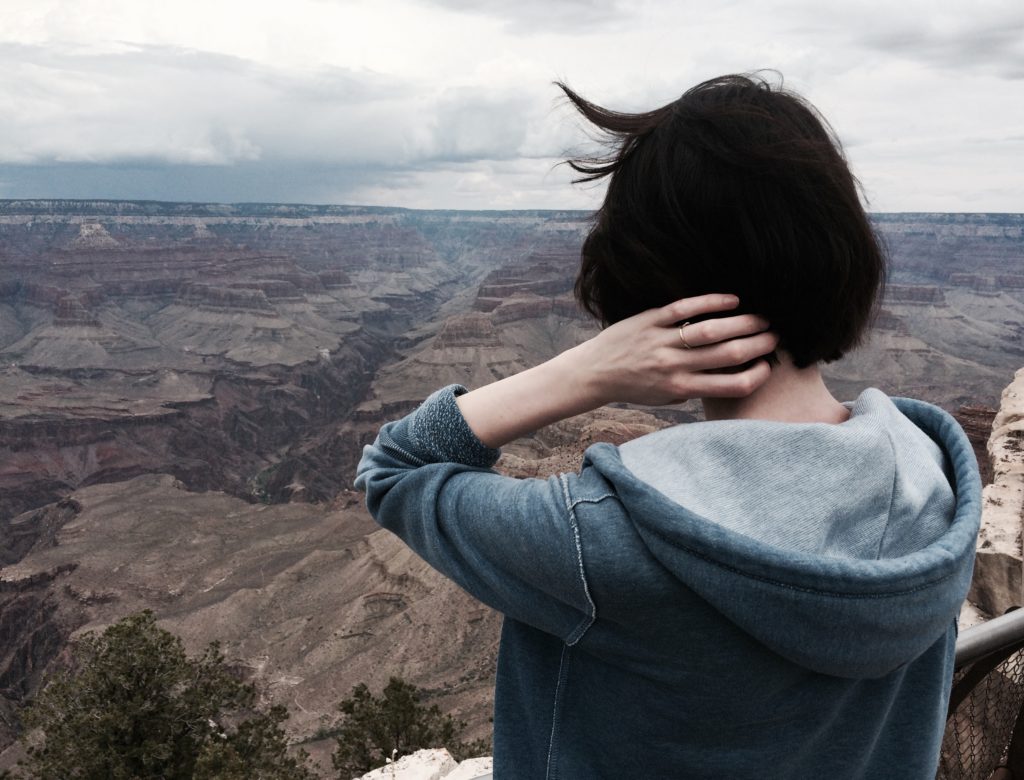
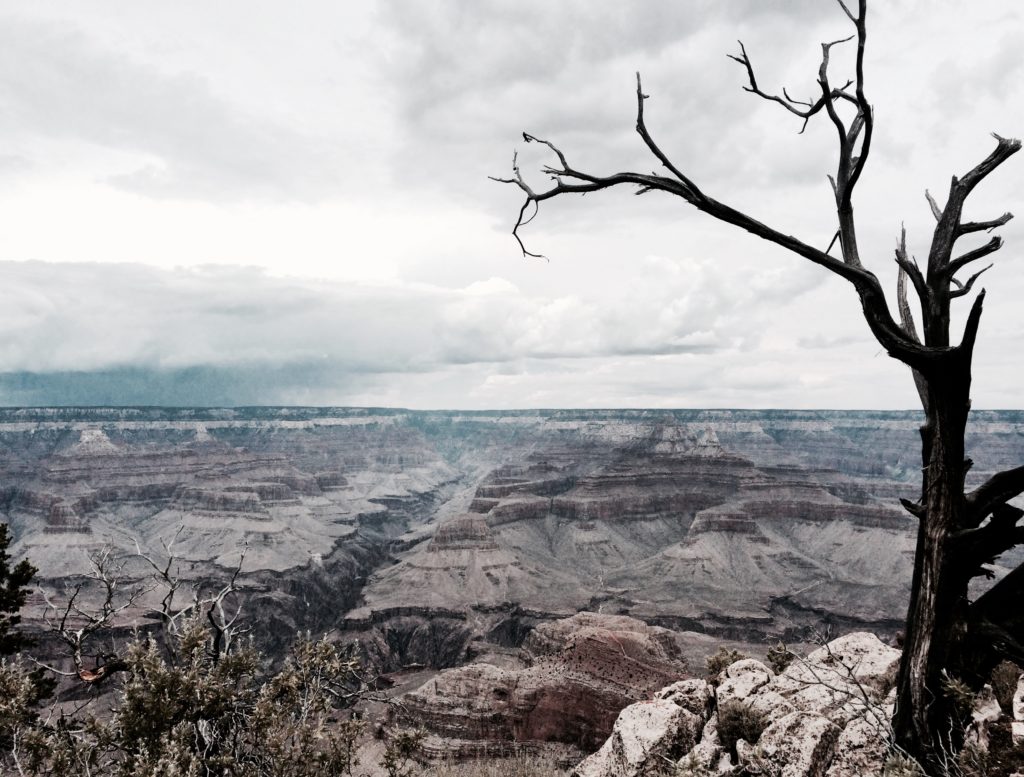
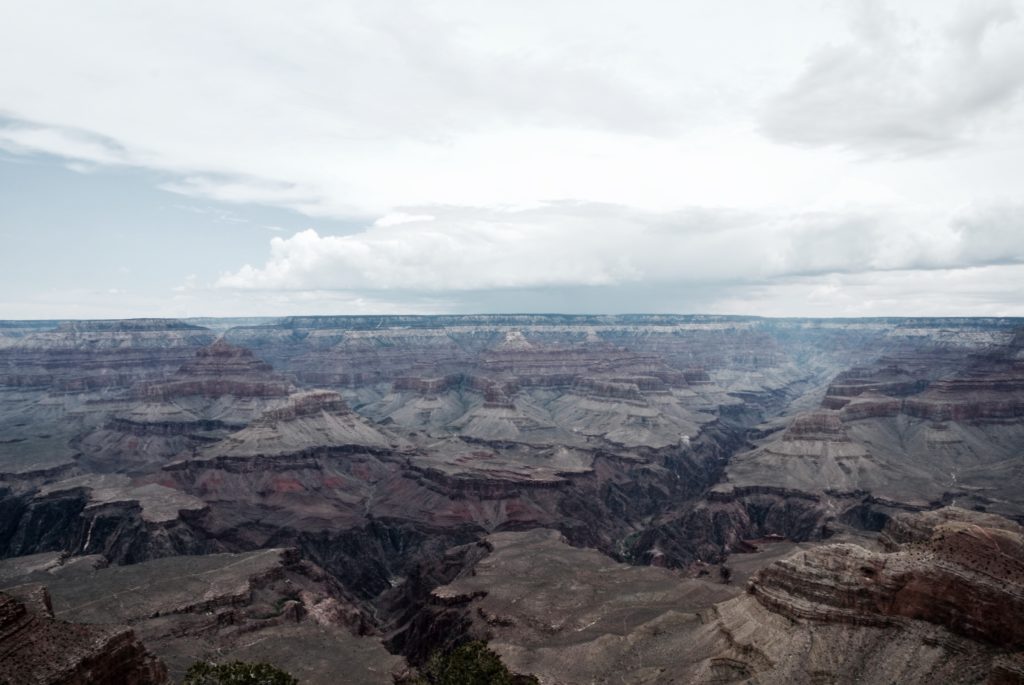
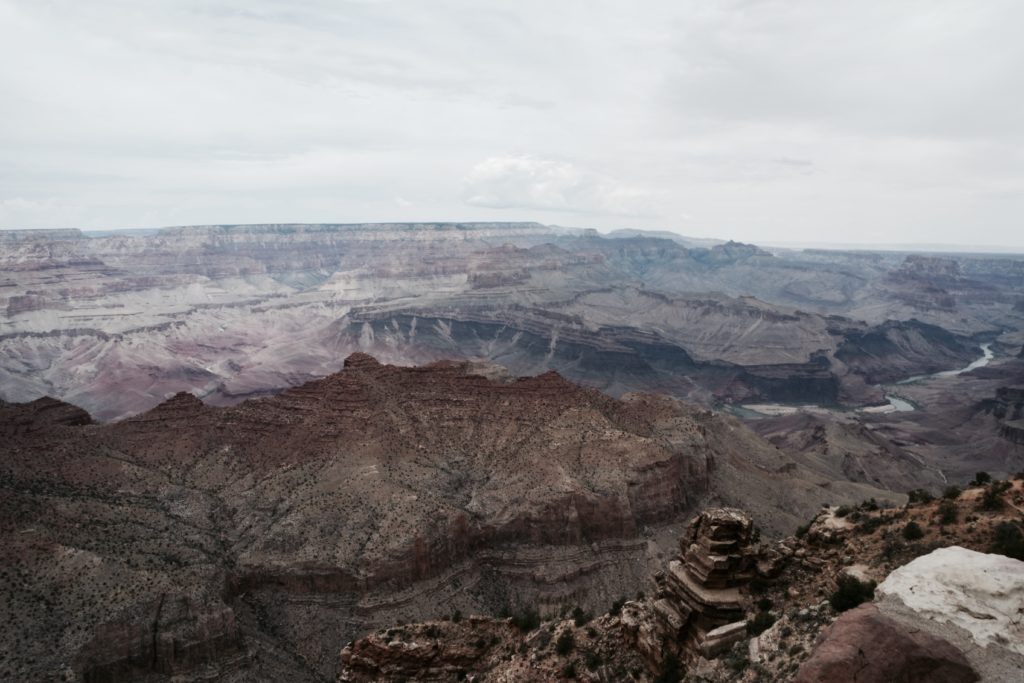
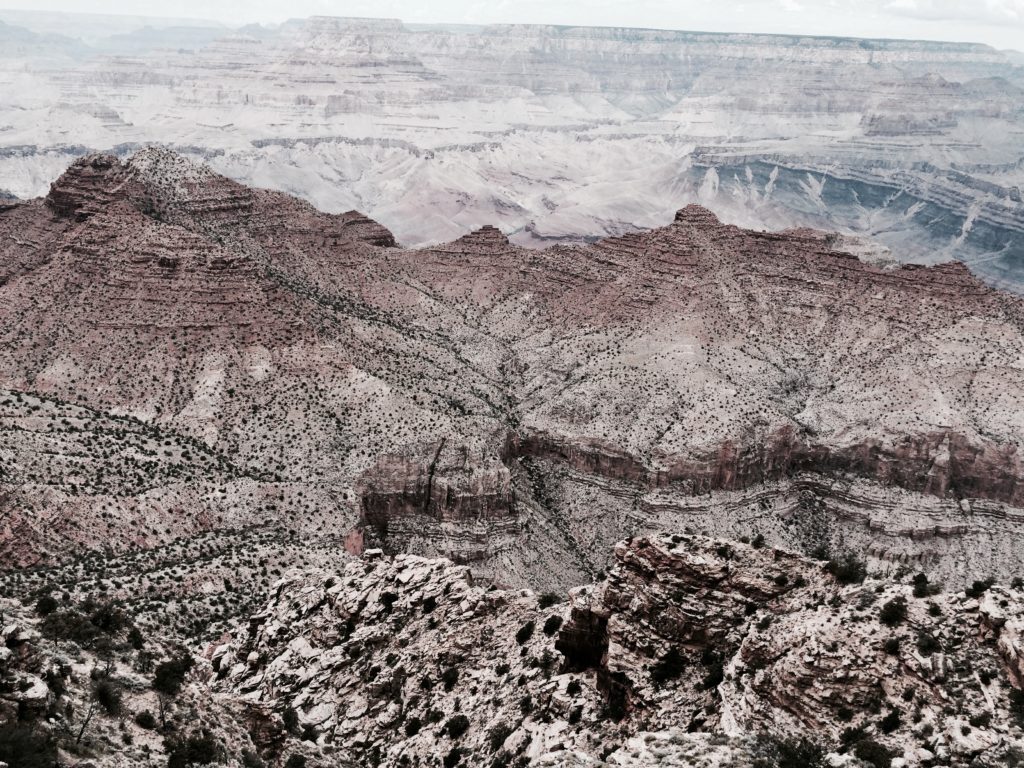
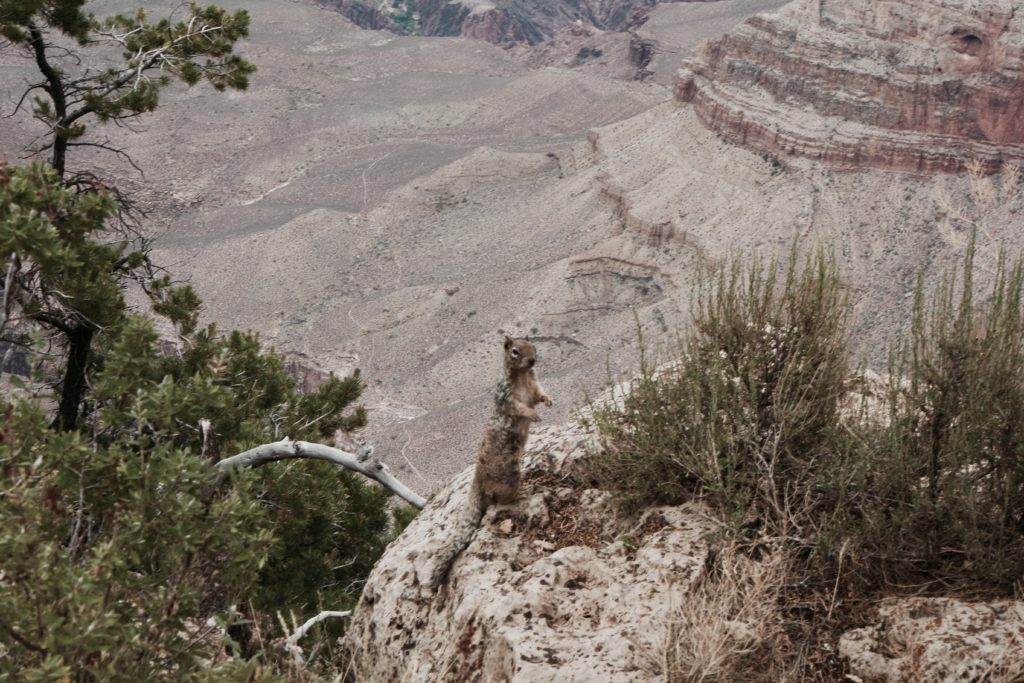
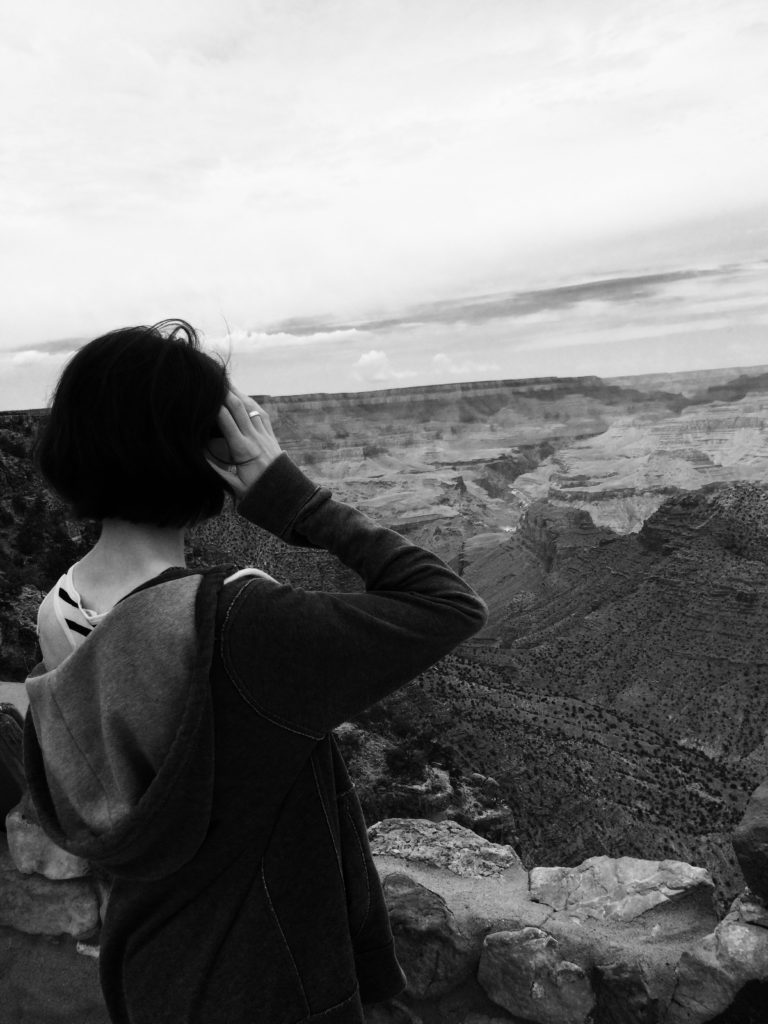
Looking from the lowest to the highest layers of the Canyon we have a real lesson of geology. We can see Proterozoic (1.8 billion years ago) and the Paleozoic, aged about 525 million years. The highest layer at the top of the Canyon was formed about 270 million years ago in the Paleozoic era where we can see Permian rocks. The entire Canyon has a length of 446 km (277 miles) and its width ranges from several hundred meters to as much as 29 kilometers (18 miles). The lowest point of the Canyon is the Granite Gorge reaching 1857 meters (6093 feet).
Is it possible that it was only the rushing Colorado River that shaped such a huge Canyon for millions of years? Why are rock blocks in the Canyon’s section as equal as if they never underwent pressures and ripples? Such questions are asked not only by me when observing this majestic Colorado plateau, but also by geologists who are still exploring this phenomenon. There are more and more theories that lead to new discoveries. Certainly, the Great Canyon is a mystery, and I have goose bumps on my shoulders because of the magic that I feel when I am observing this miracle of nature.
*
Wodząc wzrokiem od najniższych warstw Kanionu po najwyższe mamy prawdziwą lekcję geologii. Na własne oczy możemy zaobserwować proterozoik (1,8 mld lat temu) oraz paleozoik, który powstawał ok 525 mln lat temu. Najwyższa warstwa u szczytu Kanionu powstała ok 270 mln lat wstecz w erze paleozoiku gdzie zaobserwujemy skały permskie. Cały Kanion liczy sobie długość 446 km (277 mil) a jego szerokość waha się od kilkuset metrów do nawet 29 km (18 mil). Najniższym punktem Kanionu jest Granite Gorge (Wąwóz Granitowy) sięgający 1857 metrów głębokości (6093 stóp).
Czy to możliwe, że to wyłącznie rwąca rzeka Kolorado ukształtowała przez miliony lat taki kolos? Dlaczego bloki skalne w przekroju Kanionu są tak równe, jakby nigdy nie przeszły nacisków i pofałdowań? Takie pytania zadaję sobie nie tylko ja obserwując ten majestatyczny płaskowyż Kolorado, ale także geologowie, którzy wciąż badają to zjawisko. Teorii pojawia się więcej, a każda z nich prowadzi do coraz to nowszych odkryć. Z całą pewnością Wielki Kanion Kolorado kryje niejedną tajemnicę, a magia jaką odczuwa się obserwując ten cud natury tworzy na moich ramionach gęsią skórkę.
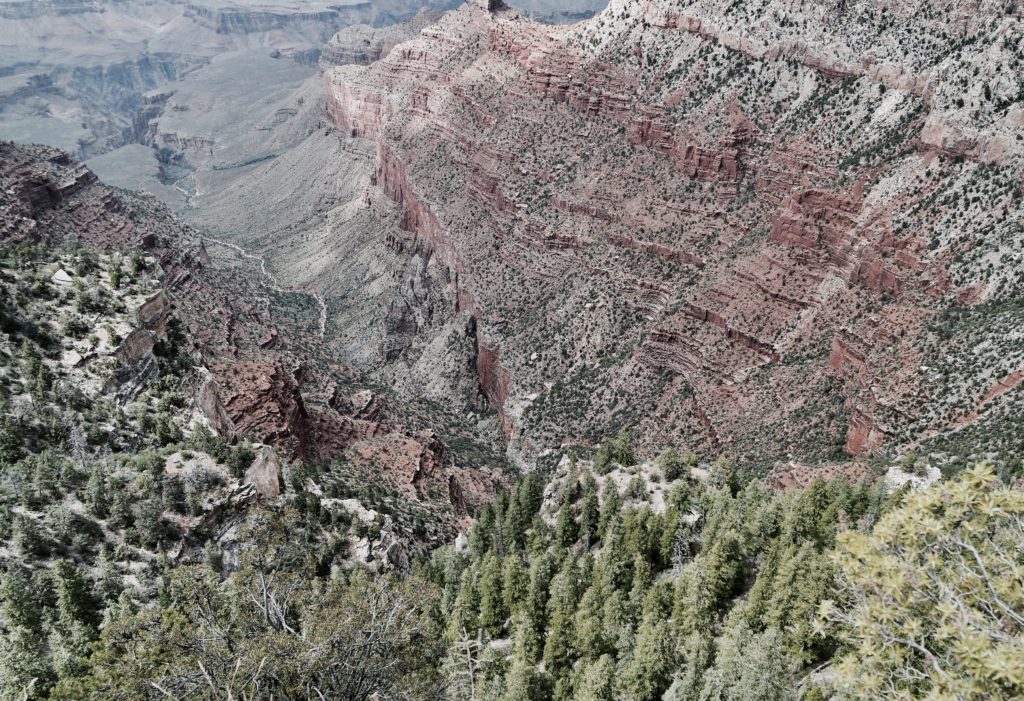
When we enter the Great Canyon National Park we pass a Mule deer pasturing near the road, and a mighty bird is flying over the car, making us stunned. Its wingspan makes an amazing impression and we notice a reddening of the head. When we reach the Park I have to explore the subject in details and find out that this giant is a Condor, who likes the Canyon rocks to lay its eggs. Very valuable eggs, since the Condor couple has only one egg per year.
The Great Canyon is also home to squirrels (Abert’s and Kaibab). There are really a lot of them and they run around the edges without worrying about anything.
The reptile that avoids humans (with reciprocity) is the rattlesnake. The Grand Canyon Rattlesnake species has a slightly pink color that allows it to hide in the rocks and slits of the Canyon perfectly.
*
Wjeżdzając na teren Parku Narodowego Wielkiego Kanionu mijamy jelenia (Mule deer) pasącego się przy samej drodze, a nad naszym samochodem przelatuje potężne ptaszysko wprowadzając nas w osłupienie. Rozpiętość skrzydeł robi niesamowite wrażenie i dostrzegamy czerwone ubarwienie głowy. Docierając do Parku muszę zbadać temat dogłębnie i dowiaduję się, że owy gigant to Kondor, który upodobał sobie skały Kanionu do składania swych jaj. Bardzo cennych jaj, gdyż para Kondorów składa co roku jedynie jedno jajo.
Wielki Kanion zamieszkują także wiewiórki ( Abert’s i Kaibab). Jest ich naprawdę sporo i beztrosko biegają po krawędziach nic sobie nie robiąc z wysokości.
Natomiast gadem unikającym ludzi (z wzajemnością) jest wąż grzechotnik. Odmiana zwana Grand Canyon Rattlesnake ma lekko różową barwę, która pozwala idealnie ukryć się w skałach i szczelinach Kanionu.
My third visit in Grand Canyon - June 1, 2017
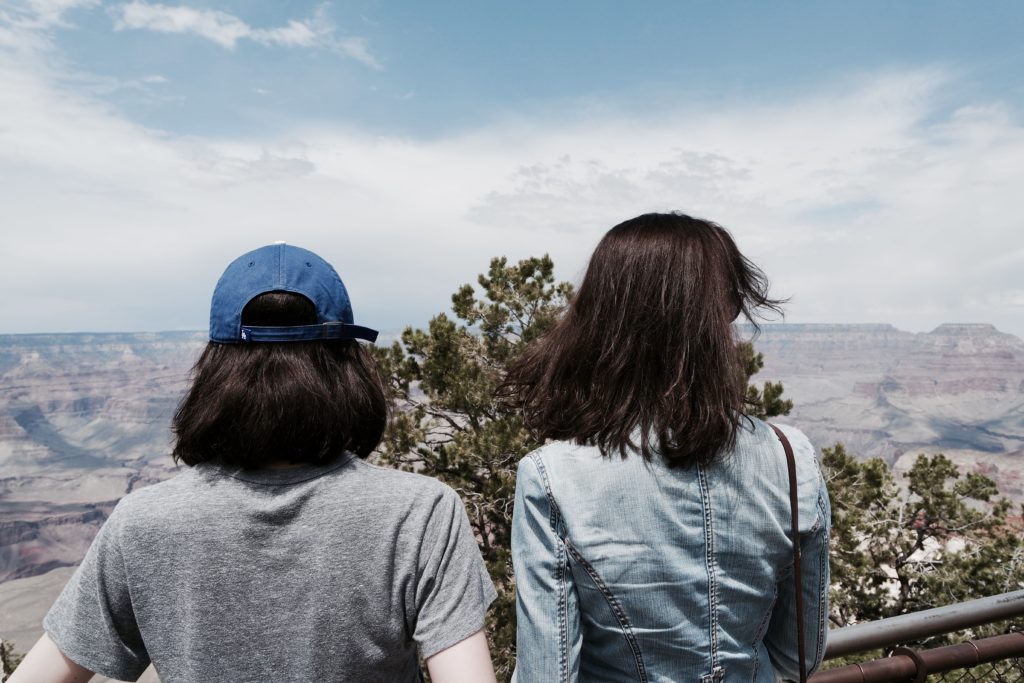
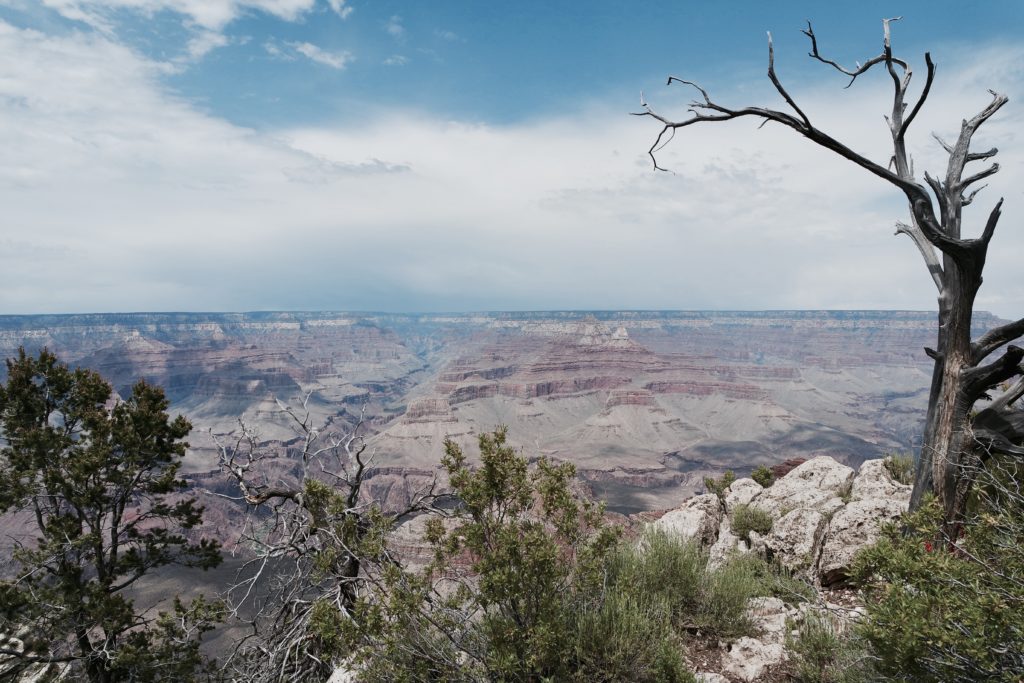
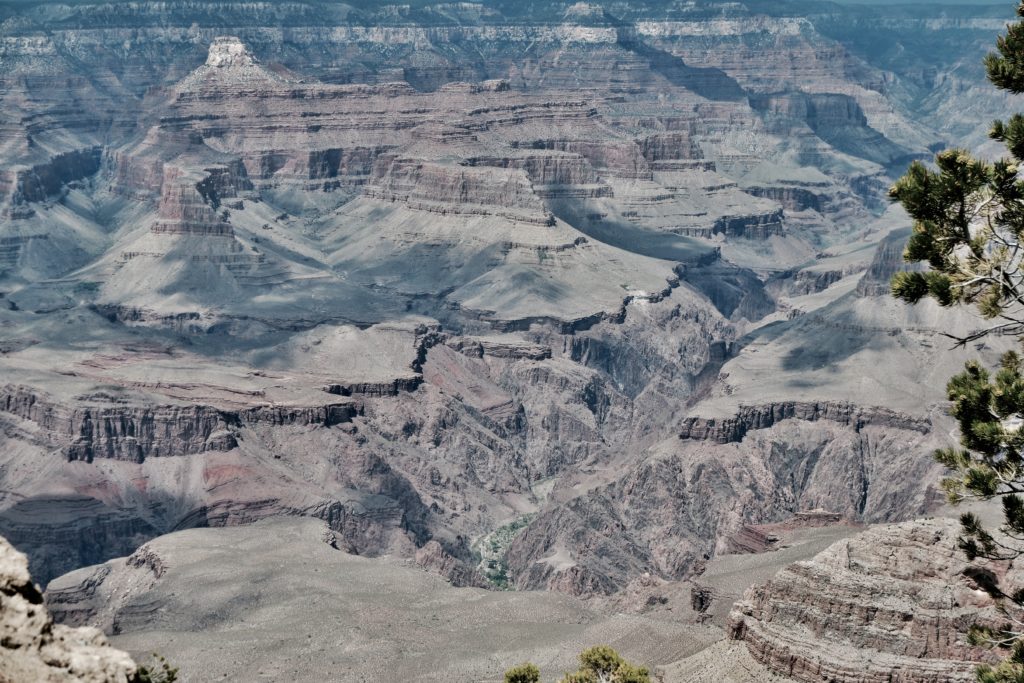
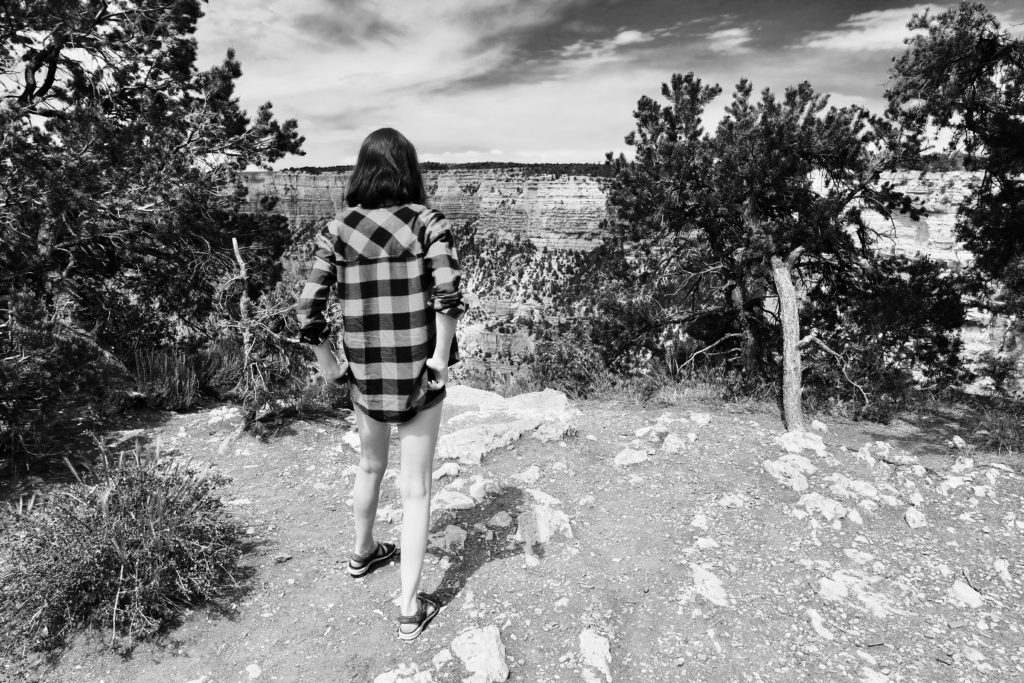
The Grand Canyon is located in the western United States, in the state of Arizona.
*
Wielki Kanion Kolorado znajduje się w zachodniej części Stanów Zjednoczonych, w stanie Arizona.

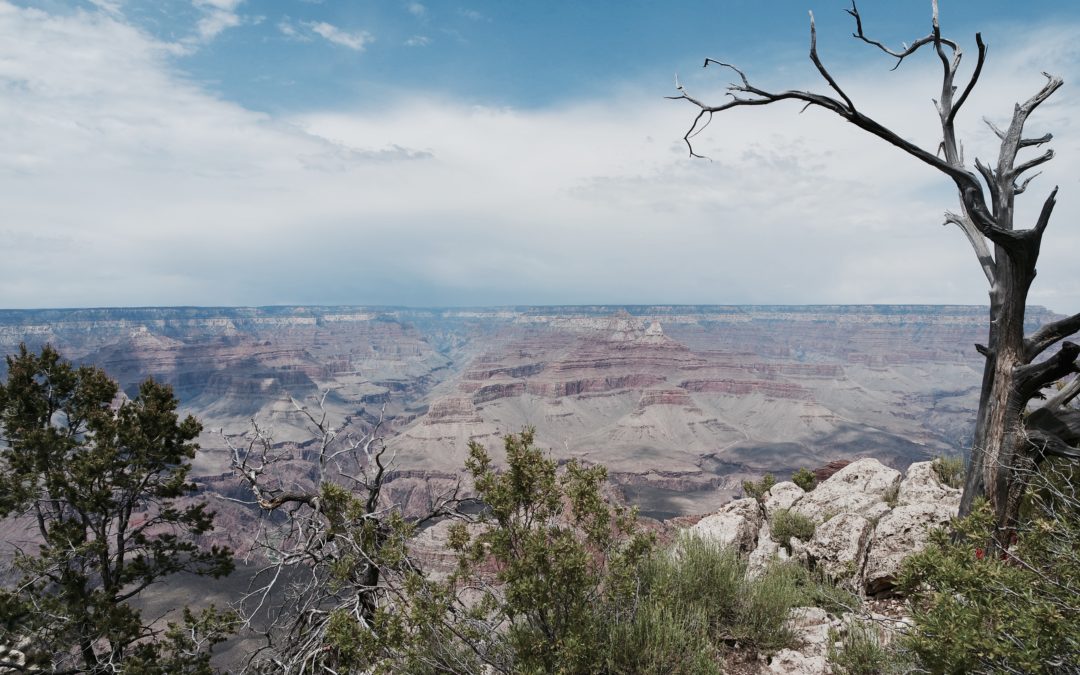



Tu tylko można parokrotnie ubrać i skoczyc